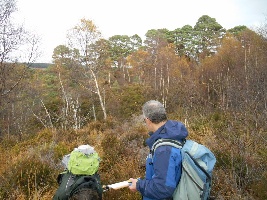 It has been made clear by examples such as Ash Dieback, that our trees face a serious threat from new diseases and pests. As trees are everywhere and are well-loved parts of our landscape, an important part of our economy and an essential part of our biodiversity, their loss has serious consequences. However, dealing with each new threat as it comes along is difficult, expensive and potentially futile as threats can evolve so much faster than their tree hosts. Also, tree health is not just about a single pest or disease, but about growing trees in the right place, about keeping population sizes up, about ensuring seedlings get a chance to grow and about allowing forests to change as the environment changes. So, in order to find a sustainable long-term strategy for keeping our trees healthy, we need to consider the range of real and potential threats that trees face and try to deal with these together. At the same time, we need to ask what is possible for changing the way we grow trees: how do we use trees now, what do we want from our trees in the future, and how much change are we willing to accept? By finding a middle ground, that brings together the best biological knowledge with a clear understanding of the possible ways to adapt, we can give our trees the best possible chance of withstanding new threats.
It has been made clear by examples such as Ash Dieback, that our trees face a serious threat from new diseases and pests. As trees are everywhere and are well-loved parts of our landscape, an important part of our economy and an essential part of our biodiversity, their loss has serious consequences. However, dealing with each new threat as it comes along is difficult, expensive and potentially futile as threats can evolve so much faster than their tree hosts. Also, tree health is not just about a single pest or disease, but about growing trees in the right place, about keeping population sizes up, about ensuring seedlings get a chance to grow and about allowing forests to change as the environment changes. So, in order to find a sustainable long-term strategy for keeping our trees healthy, we need to consider the range of real and potential threats that trees face and try to deal with these together. At the same time, we need to ask what is possible for changing the way we grow trees: how do we use trees now, what do we want from our trees in the future, and how much change are we willing to accept? By finding a middle ground, that brings together the best biological knowledge with a clear understanding of the possible ways to adapt, we can give our trees the best possible chance of withstanding new threats.
The most important part of finding a way to do this is bringing together many different groups of people, and different types of knowledge. A lot is known about many of our trees already, but usually this knowledge comes from unlinked, independent studies and rarely do results from one study tell us something about another, even for the same tree species. Much better coordination is needed. To show how this can be done, we aim to use the example of Scots pine, an important native tree species.
...